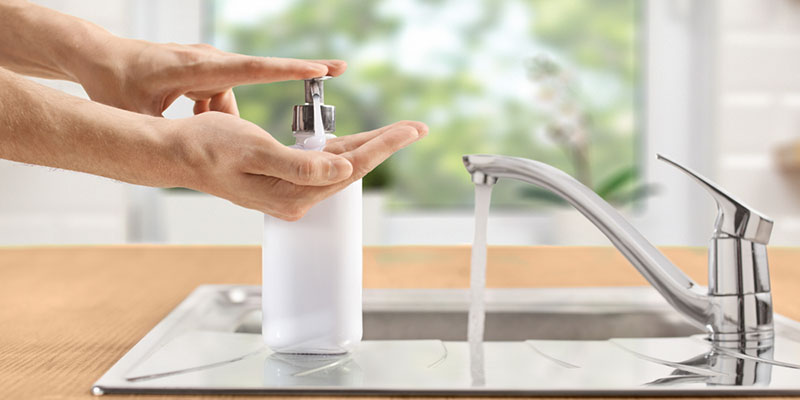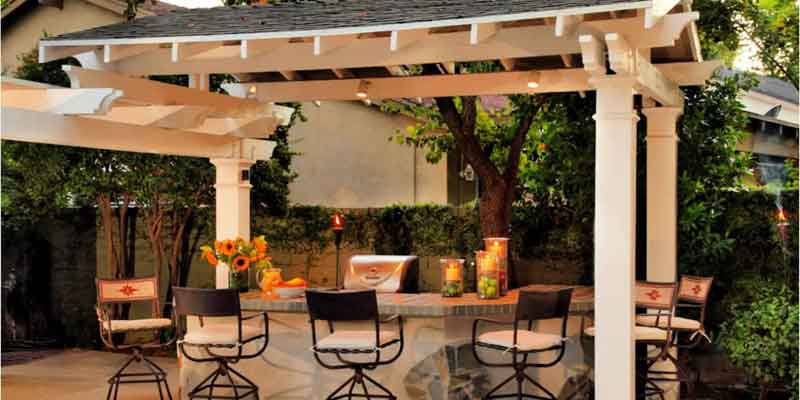How to Use A Pasta Pot – Most Useful Tips
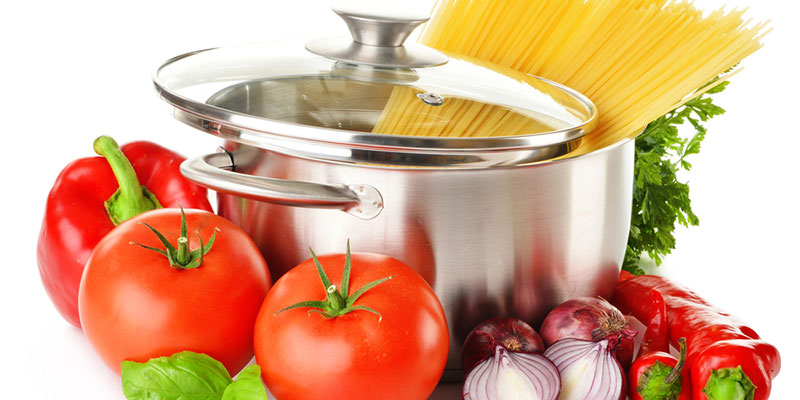
A Pasta Pot
A high-quality pasta pot makes your pasta-cooking job faster and easier. But in the very first place, you need to know how to use a pasta pot properly. And, it’s pretty simple to feel that things are a bit difficult for novice users.
To help you out, we’ve crafted this article with every relevant piece of information that is needed. We will try to enlighten you on the topic in-depth so that you cannot stop scrolling. Sounds promising?
Let’s start!
The Basics of a Pasta Pot
Before you go to use a pasta pot, knowing what is a pasta pot and what else you can cook with it is important. 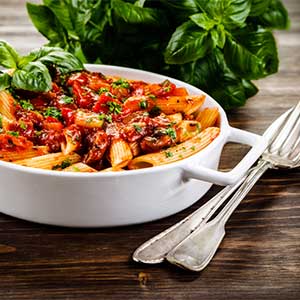 Basically, we will call a pot ‘pasta pot’ when it is specially designed to boil pasta and yes, it is a self-draining pot.
Basically, we will call a pot ‘pasta pot’ when it is specially designed to boil pasta and yes, it is a self-draining pot.
The maximum of the pasta pots come with a lid for straining the water out when the pasta is cooked. On the other hand, another type of pasta pot comes with a straining insert basket that drains out the water by lifting the pot.
The last type of pots are safer as they prevent the hot water from splashing out. This will keep you from experiencing anything bad while pouring pasta into the boiled water in another pot. So, yes, we can say that this kitchen appliance rolled into one- a stockpot and a colander.
You can prepare not only pasta with your pasta pot but also you can make delicious spaghetti. Not only these, you can cook a hard-boiled egg, beans, lentils, and anything that requires straining.
How to Use a Pasta Pot to Cook Pasta?
Trust me, it’s pretty simple to prepare pasta using a pasta pot. But yes, there are some tips and tricks that will help you get perfect taste and make the most of a pasta pot.
Here are 6 easy steps to use a pasta pot to prepare mouth-watering pasta.
Step 1: Fill the Pot with Fresh Water
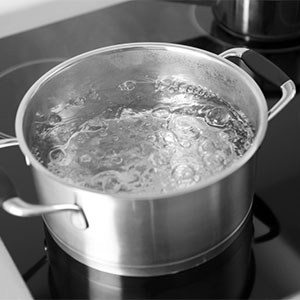 We hope that you’ve purchased the right-sized pot cause it’s crucial to take the ‘size’ part seriously. For instance, if you’re going to cook a one-pound box of pasta, you need at least a 4 US quarts-sized pasta pot.
We hope that you’ve purchased the right-sized pot cause it’s crucial to take the ‘size’ part seriously. For instance, if you’re going to cook a one-pound box of pasta, you need at least a 4 US quarts-sized pasta pot.
What if you use a very small pot here? Well, your pasta may clump together when it cooks. Because the pasta requires enough room to move around while getting cooked.
If everything is fine, fill the pot ⅔ full of water. And, set your pot on the stove and cover it with a lid.
The water will boil faster if you cover the pot with a lid. Now, set the burner to high heat.
Step 2: Add Salt and Pasta
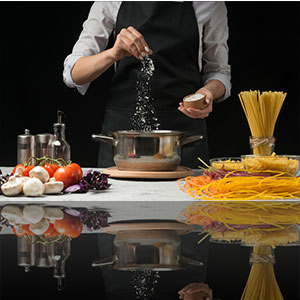 Remember, try not to add these before the water begins to boil. Otherwise, it may lead your pot to discoloration and corrosion of its surface. Once you see the water is boiled vigorously, remove the lid carefully.
Remember, try not to add these before the water begins to boil. Otherwise, it may lead your pot to discoloration and corrosion of its surface. Once you see the water is boiled vigorously, remove the lid carefully.
Now, add 1 tablespoon of salt to the water and 1 pound of pasta to the boiled water. Here, the salt will help to season the noodles to make flavourful pasta. If ‘how many servings of pasta to cook?’ this question bugs you, check the box’s side for suggested serving sizes.
A point to be noted, if you’re cooking long noodles (e.g spaghetti) that aren’t fighting in your pot, do not break them.
Wait for around 30 seconds and then use a spoon to push them into the water. This is how you should deal with long noodles.
Step 3: Stir the Noodles
 Use a pasta fork to stir and break the noodles. Then, leave the lid off your pot. Look for a recommended cooking time on the pasta package and set a timer according to the suggestion.
Use a pasta fork to stir and break the noodles. Then, leave the lid off your pot. Look for a recommended cooking time on the pasta package and set a timer according to the suggestion.
If you’re dealing with thin pasta like angel hair, it will take less time than long or thick noodles. So, be sure of the timing and set the minimum time that is suggested.
For instance, if the recommended time is from 8 to 10 minutes, set a timer for 8 minutes.
And, it’s crucial to stir the noodles every few minutes as they do not stick together.
If you notice the water is boiling over the sides of your pot, turn down the burner to medium-high.
Step 4: Drain the Pasta
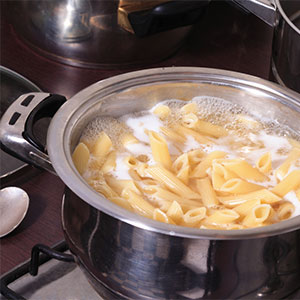 Before you go to drain the pasta, bite into a noodle to check if it’s cooked enough. If you find the pasta still hard, let it boil for another minute. And, once it’s perfectly boiled, carefully, scoop out 1 mug of pasta water. Set aside the mug when you drain the pasta.
Before you go to drain the pasta, bite into a noodle to check if it’s cooked enough. If you find the pasta still hard, let it boil for another minute. And, once it’s perfectly boiled, carefully, scoop out 1 mug of pasta water. Set aside the mug when you drain the pasta.
Now, set a large colander in the bottom of your sink. Make sure you wear oven mitts while handling this hot water stuff to keep your hands safe from the boiling water.
Finally, pour your pasta into the colander and gently shake it to let the water drain into the sink.
Step 5: Toss the Pasta with Sauce
 In case, you are planning to use sauce, do not add oil or run cold water over your pasta. Have you heard from someone that adding olive oil to the cooked pasta will keep them from sticking together?
In case, you are planning to use sauce, do not add oil or run cold water over your pasta. Have you heard from someone that adding olive oil to the cooked pasta will keep them from sticking together?
Well, it will keep the sauce from sticking to your pasta as well. So, take the pasta and put it back into the pot. Then, add sauce to your pasta how much you want. Combine the sauce with pasta using tongs.
If you find the sauce is too thick, you can use the pasta water you set aside before.
Step 6: Add a Finishing Touch Before You Serve it
 This part is for adding more fresh flavor to your pasta. Add vegetables like zucchini, chopped cherry tomatoes, or shredded bell peppers. And, if you’re going to make it a cold pasta salad, all you need to do is to keep the pasta in the refrigerator just one hour before serving it.
This part is for adding more fresh flavor to your pasta. Add vegetables like zucchini, chopped cherry tomatoes, or shredded bell peppers. And, if you’re going to make it a cold pasta salad, all you need to do is to keep the pasta in the refrigerator just one hour before serving it.
What if you want to make a creamy pasta? In this case, mix cheese into macaroni. Stir together cheese, milk, butter, and flour to make a sauce. Finally, stir in cooked macaroni and serve it.
Or if you want to make it extra-bubbly, you can bake it before serving.
Tips to Keep Pasta Shapes Intact
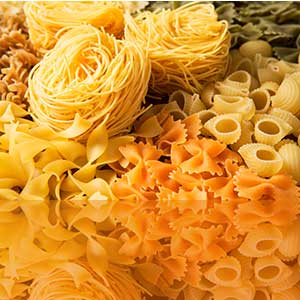 Sometimes, people who are good at making pasta also face this problem- the shapes of pasta hardly stay intact. For example, the outer edges break off which results in some pasta serving into two.
Sometimes, people who are good at making pasta also face this problem- the shapes of pasta hardly stay intact. For example, the outer edges break off which results in some pasta serving into two.
If you ask the reasons behind these happenings, insufficient water, and less stirring are two that liable. So, to get rid of this issue, you need to stir very carefully especially, when you deal with the bottom of the pot.
Also, you need to work with adequate water of (3-4)” above your pasta. Hopefully, these two things will help keep pasta shapes intact.
How Much Water You Should Put in Pasta Pot?
Adding the right amount of water helps make the perfect pasta or spaghetti, so, never take this part trivial. However, the answer to ‘how much water is needed?’ This question depends on how much pasta or spaghetti you are going to make.
In general, you need to use 1 liter of water for every 100 grams of pasta or spaghetti. This quantity is perfect for any kind of recipe you are going to prepare using your pasta pot.
How Long Should You Store Pasta in a Fridge?
So, what if you need to store the leftover pasta? You will keep it in the refrigerator but yes, for how long it will be its good shape is an important question to ask.
Remember, what ingredients you are using and which cooking method you’re following to make the pasta play a significant role when it comes to making pasta long-lasting in a fridge.
If it is about plain cooked pasta, it will be okay for a maximum of 7 days in a fridge. On the other hand, if you have pasta with sauce, you should not keep it in the fridge for more than 4 days. Otherwise, the chemicals of sauce may harm your health.
Solutions to 3 Common Problems
Using and maintaining a pasta pot is pretty simple. But you need to clean it regularly to make the pot long-lasting. However, over time, you will deal with problems that may require a repair or replacement.
But here are some common problems that are easy to deal with. Keep these in your mind as you can take actionable steps right after you face one of these.
1. Water Stains
After some use, you may find some water stains on your pot’s inner surface. Cleaning and maintaining the pot regularly is crucial to prevent the stains. However, if they already are on the surface of your pot, here’s what to do.
First of all, wet the surface of your pot. Next, take a wet sponge and sprinkle some baking soda on it. Start rubbing the sponge on the surface, keep doing this until the stains completely go away. Finally, rinse your pot and dry it well.
2. White Spots
The reason behind white spots on the surface of your pot is the regular usage of calcium-based food. To remove the white spots, boil a mixture of vinegar in a 3:1 ratio, and boil it inside your pot.
Wait until it cools down, rinse the surface with fresh water. Hopefully, you will see no white spot in there anymore.
3. Discoloration
Pots that are made of stainless steel prone to discolor over time. If you’re facing this with your pot, wash it off using vinegar or any non-abrasive cleaner. It will help the pot get back its original color.
Pro Tips to Use a Pasta Pot
To spice things up, let’s get to know some pro tips to use your pasta pot.
- Choose the right pasta shape for the sauce you’re going to use. For example, if you use delicate sauces that are primarily made of tomatoes or olive oil, long pastas like spaghetti should be your pick. Because the thin sauce will coat these pastas evenly.
- Make sure you stir the pasta right after you add it to the cooking water. Then, continue stirring for the next few minutes to prevent the pasta from sticking.
- Set aside some pasta water and use it for making your sauce.
- If you’re not going to make a quick stir fry or pasta salad, do not rinse the pasta because it may wash away all of the starch.
- Do not add sauce to your pasta, add pasta to your sauce instead.
10 Best Pasta Pot in a Video Review
Frequently Asked Questions
Conclusion
There you have it! Now you know everything about how to use a pasta pot to make world-class pasta. Since we left no stone unturned to provide you the relevant information, hopefully, you have no confusion regarding this topic anymore.
Before we wrap up, we would like to suggest something to you. Learn to know the importance of using, cleaning, and maintaining things regularly. It’s pretty easy to keep your pasta pot in good shape if you take care of it.
Wish you good luck!


